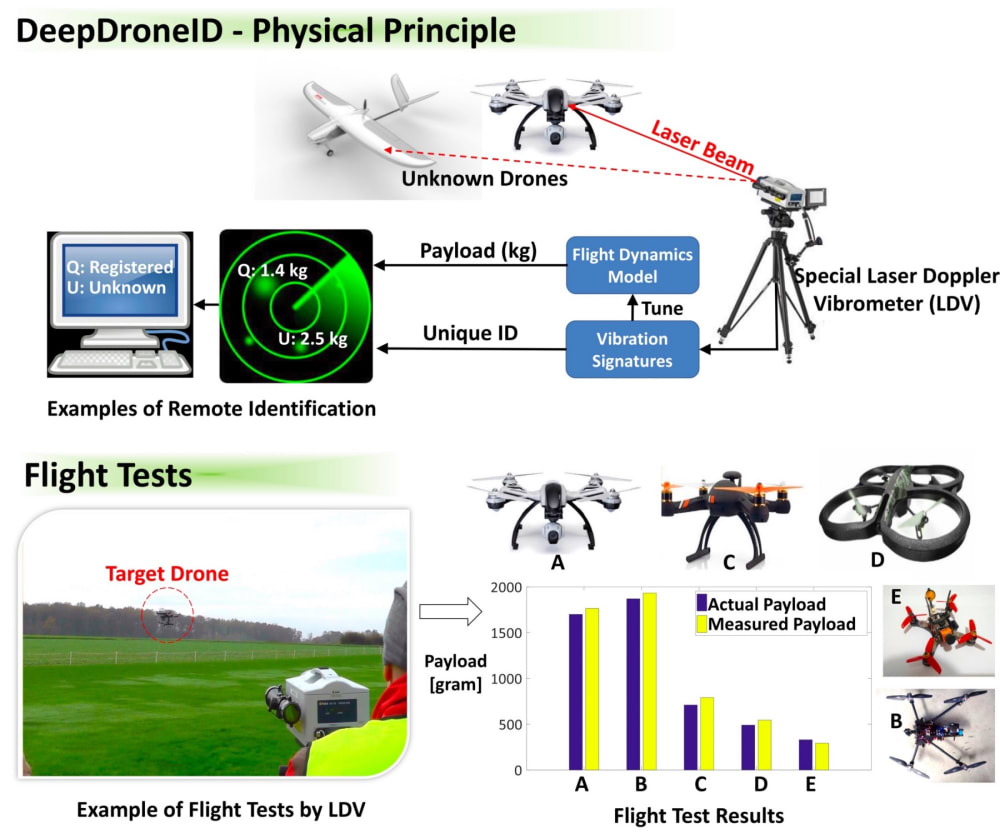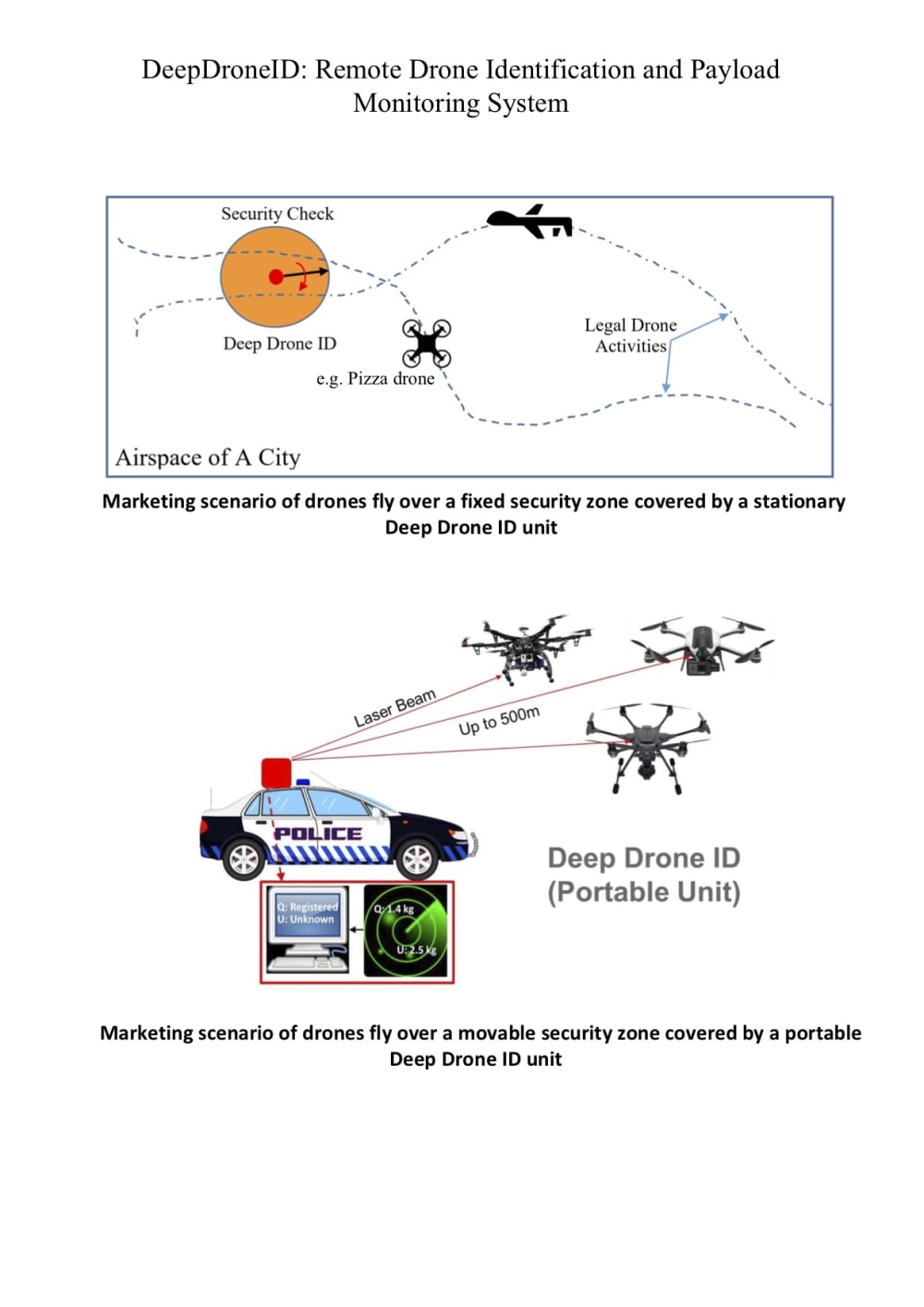

The risk of illegal use of drones has greatly increased in terms of privacy violation, spying, and terrorism. The current state-of-the-art drone detection systems (DDSs) involve diverse sensing methods such as acoustic sensors, video surveillance, and RF methods. However, none of existing DDSs provide remote payload monitoring or verification. Safety regulations for drones in the United States and most of EU are currently based on their weight. In addition, the registered payload of the most commercial drones can be greatly increased by simple re-configuration procedures (e.g. to carry explosives or drugs) that may not be detected by current DDS. However, there are no tools or methods to monitor or verify payload of drones to check legal limits and drone identity.
DeepDroneID is an innovative system for remote identification and payload monitoring of standard and modified drones. DeepDroneID is based on measuring vibration noises, measured by a long-range laser vibrometer, of any drone as a unique signature for remotely verifying registered specifications. This signature is compared to a pre-stored database of registered drones in order to identify a drone’s manufacturer and any unauthorized internal modifications to registered specifications such as payload capacity. DeepDroneID is also able to measure the payload capacity of unknown drones based on their motion performance and their instantaneous vibration noises. Flight tests have been successfully conducted for a group of standard and modified drones by the Institute of Flight Systems, DLR (German Aerospace Center) in Germany.
DeepDroneID system is comprised of a commercial long range laser vibrometer and customized vibration analysis software. A complete DeepDroneID system costs $50,000$ to $250,000 depending on the maximum identification range. This cost is much lower than the security related costs for illegal drones. DeepDroneID system can be sold as a product or it can be offered as a service by authorized companies. There are two marketing concepts: a stationary system and a portable system as shown in the attached illustration. The stationary system can be used to secure fixed areas such as airports, companies and military sites. While, the portable version can be used to secure temporary sites such sport events, business exhibitions and festivals. The civilian drone market is estimated in 2015 to reach USD 0.5 Billion and is projected to reach USD 3 Billion by 2022, at a CAGR of 19%. In parallel, the anti-drone market which involves drone detection, identification and countermeasure, was valued at USD 329.0 million in 2016 and is expected to achieve a CAGR of 24.1% by 2024 according to GrandView study.
-
Awards
-
 2020 Aerospace & Defense Honorable Mention
2020 Aerospace & Defense Honorable Mention -
 2020 Top 100 Entries
2020 Top 100 Entries
Like this entry?
-
About the Entrant
- Name:Mohamed Ismail
- Type of entry:individual
- Software used for this entry:MATLAB
- Patent status:patented





